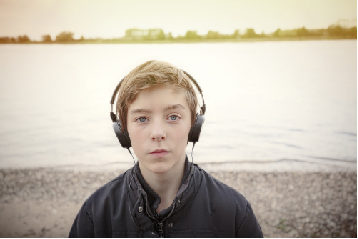News
To acknowledge Suicide Prevention week, Dr. Joshua Gordan (NIMH Director) and Dr. Jane Pearson (Chair of the Suicide Research Consortium in NIMH’s Division of Services and Intervention Research) are co-leading a live Facebook event to discuss the latest research-backed strategies for suicide prevention and answer related questions from event participants. The event will be hosted on Friday, September 14th from 1:00 to 1:30 p.m. ET. For more information on the event and how to participate, follow NIMH on Facebook.
September is National Suicide Prevention Awareness Month 2018 and September 9-15, 2018 is National Suicide Prevention Week. This is a time to reach out and redouble our efforts to provide support and care to those in pain, and work with our health and mental health systems to provide the best possible care for suicide prevention.
There is no single cause of suicide and no single strategy that will prevent all suicide deaths. The ASAP (Adolescent Suicide Self-Harm & Substance Abuse Treatment and Prevention) Center aims to improve care for the prevention of suicide, premature deaths, and self-harm by collaborating with health and mental health systems and organizations, schools, clinics, communities, and other partners. While there is no single cause of suicide, traumatic stress has been shown to be associated with increased risk of suicide and self-harm. As part of the National Child Traumatic Stress Network (NCTSN), the ASAP team works to develop, adapt, and disseminate evidence-supported trauma-informed treatments and strategies for delivering care in communities across the nation.
Learn more:
https://suicidepreventionlifeline.org/promote-national-suicide-prevention-month/
https://www.nami.org/Get-Involved/Awareness-Events/Suicide-Prevention-Awareness-Month
 Almost half of all children in the United States have experienced at least one adverse childhood experience
Almost half of all children in the United States have experienced at least one adverse childhood experience
Adverse childhood experiences (ACEs) are potentially traumatic experiences that can have lasting negative health and developmental effects, making them a major health problem in the U.S. and around the world. A new brief report based on data from the 2016 National Survey of Children’s Health examines the prevalence of ACEs in the U.S. as a whole and within each state, as well as the differences in prevalence by race/ethnicity and geographic region (see full article here). Of note, the researchers found that almost half of all children in the U.S. have experienced at least one ACE. Through our trauma-informed treatments and treatment training program, the ASAP Center aims to alleviate the deleterious health impacts of such experiences. To learn more about our approach, explore our website!
 Dr. David Goldston presents at the 13th Annual American Foundation for Suicide Prevention Chapter Leadership Conference
Dr. David Goldston presents at the 13th Annual American Foundation for Suicide Prevention Chapter Leadership Conference
At the end of January, the Center’s Dr. David Goldston was invited to lead a talk at the 13th Annual American Foundation for Suicide Prevention (AFSP) Chapter Leadership Conference in Charlotte, North Carolina. Dr. Goldston’s talk focused on “Lessons Learned from Youth Suicide Research” and involved a discussion of the role of trauma in suicide risk. For more information about AFSP, visit their website: https://afsp.org/.
 Dr. Asarnow Represents ASAP Center at National Zero Suicide Meeting
Dr. Asarnow Represents ASAP Center at National Zero Suicide Meeting
The Center’s Dr. Joan Asarnow was invited to present our work and represent our team at the SAMHSA/NIMH Zero Suicide & National Strategy for Suicide Prevention Grantee Meeting this month. The Zero Suicide initiative aims to reduce the rate of suicide by promoting the study and dissemination of suicide prevention strategies. Let’s get to work!
 American Foundation for Suicide Prevention Presents the “Seize the Awkward” Campaign
American Foundation for Suicide Prevention Presents the “Seize the Awkward” Campaign
In January, the American Foundation for Suicide Prevention (AFSP) partnered with The Jed Foundation and the Ad Council to launch a new ad campaign: “Seize the Awkward.” The goal of this campaign is to encourage young people to reach out to their loved ones who may be struggling with their mental health. To watch the ad and learn more about how you can get involved, click here!
 How can you talk to your child about a suicide death?
How can you talk to your child about a suicide death?
The National Child Traumatic Stress Network (NCTSN) has developed a guide to help parents and caregivers talk to their children about a suicide death. This resource also provides useful strategies for helping children grieve such a loss in healthy, adaptive ways. To view this tool, click here.
 New Research Identifies “Invisible Risk Group” Among Youth
New Research Identifies “Invisible Risk Group” Among Youth
Dr. Vladimir Carli (National Centre for Suicide Research and Prevention of Mental Ill-Health) and his team examined risk behaviors of over 12,000 adolescents across eleven European countries. As expected, the researchers identified a “high-risk group” (teens who engaged in many risky behaviors) and a “low-risk group” (teens who engaged in few risky behaviors). Surprisingly, the team also identified an “invisible risk group.” This group tended to report a high level of media use, sedentary behaviors, and poor sleep. The rate of behavioral health problems (i.e., anxiety, suicidal thoughts) among adolescents in the “invisible risk” group was similar to that of adolescents in the “high-risk” group. Click here for the full article.